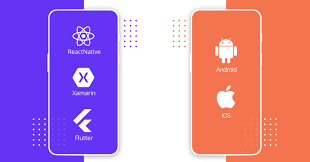Cross-platform app development has become a powerful approach for businesses looking to reach users on multiple devices without duplicating effort. This guide explores everything you need to know to create high-quality, efficient apps that run smoothly across platforms like iOS and Android.
What is Cross-Platform Development?
Cross-platform development means building a single app that works on multiple operating systems using one codebase. Instead of developing separate apps for Android and iOS, developers write the app once and deploy it everywhere.
This approach saves time and resources, speeds up development, and maintains feature parity across devices.
Popular Cross-Platform Frameworks
There are several tools available for cross-platform development:
- React Native: Developed by Facebook, uses JavaScript and React. It offers near-native performance with a large community.
- Flutter: Google’s framework using Dart language. It compiles to native code and provides a rich set of customizable UI widgets.
- Xamarin: Microsoft’s offering based on C#, integrated with Visual Studio. It compiles apps to native code for high performance.
- Ionic: Uses web technologies like HTML, CSS, and JavaScript to build hybrid apps that run inside a WebView.
Choosing the right framework depends on your team’s skills, project requirements, and target platforms.
Benefits of Cross-Platform Development
- Faster Time to Market: One codebase means quicker development and easier maintenance.
- Cost Efficiency: Reduced development and testing costs since you’re managing fewer codebases.
- Consistent User Experience: Uniform UI and features across platforms.
- Easier Updates: Changes can be deployed simultaneously to all platforms.
Challenges to Consider
- Performance: Cross-platform apps may sometimes lag behind fully native apps in speed or responsiveness, especially for graphics-heavy or complex apps.
- Access to Native Features: Some platform-specific features may require custom native modules.
- UI Consistency: Adapting to platform-specific design conventions can be tricky.
Best Practices for Cross-Platform Development
- Plan for Platform Differences: Understand how users interact with each platform and adapt UI/UX accordingly.
- Optimize Performance: Profile and optimize critical code paths; use native modules when necessary.
- Test Extensively: Test on various devices and OS versions to catch platform-specific issues.
- Leverage Plugins and Libraries: Use well-supported third-party tools to speed up development.
When to Choose Cross-Platform
Cross-platform development is ideal when you need to launch on multiple platforms quickly, have a limited budget, or want to maintain a single codebase. However, for apps needing deep platform integration or cutting-edge performance, native development may be preferable.


No responses yet